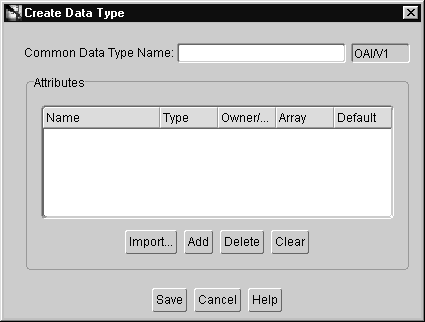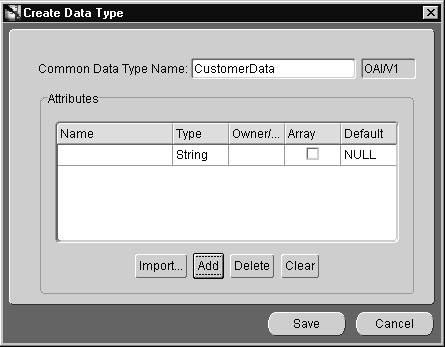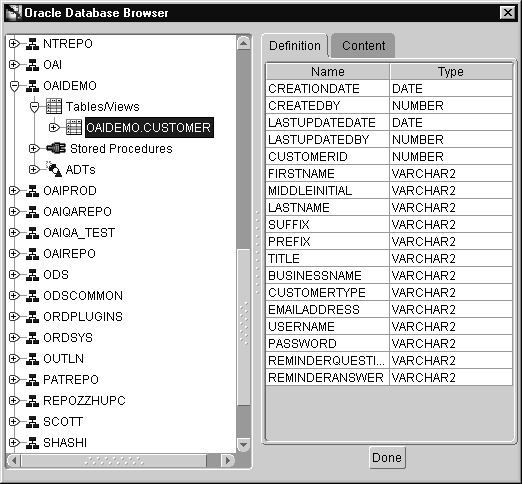Release 2 (9.0.2)
Part Number A92174-01
Home |
Solution Area |
Contents |
Index |
| Oracle9iAS InterConnect User's Guide Release 2 (9.0.2) Part Number A92174-01 |
|
This chapter describes how to create and manage applications, common views, and business objects using iStudio. This chapter discusses the following topics:
Each component integrated with Oracle9iAS InterConnect is referred to as an application. Each application expresses interest in specific messages, what its internal data type is, and how the message should be mapped to or from that internal type to the external world.
Each application has its own application view of data that allows it to participate in the integration. The application view of data uses transformations to insert into the common view.
After creating an application in iStudio, events and procedures can be created and used with the application.
|
See Also:
|
Application data types have the same function as Common Data Types but relate to a particular application.
To create an application:
The application created displays in the Design Navigation Tree under the Applications node.
The common view is the hub view of the integration where each spoke is an application wanting to participate in the integration. After defining a common view by creating a business object and common data types, existing events can be published or subscribed to, and procedures can be invoked or implemented.
When defining a common view, business objects and common data types must be created.
To create a new business object:
When creating the data associated with an event or a procedure, it is possible to define the data once and reuse it for different integration points. Common data types are used to define such data for reuse and is especially useful for defining complex hierarchical data.
For example, a purchase order contains a header object and an array of line item objects. In addition, the header object contains two address objects: Bill_To and Ship_To. Therefore, the purchase order can be defined once and used for other purchase order-related integration points such as Create_Purchase_Order, Update_Purchase_Order, and Get_Purchase_Order. Moreover, Address can be defined once and used in the Bill_To and Ship_To addresses.
To create a common data type:

Text description of the illustration is20.gif
Enter a name for the common data type in the Common Data Type Name field.
The owner and version number of the common data type display next to the common data type name. This field cannot be edited.
To add attributes:

Text description of the illustration sc28.gif
Specify the following by editing the information directly in the attribute list entry.
To import attributes:
The following example utilizes the Database import facility.
After logging in, the database tables and arguments display in the Database Browser Window.
Select the fields to add. To select a range of fields, press Shift when clicking the mouse button. To select multiple items, press Control while clicking the mouse button.

To delete a selected attribute:
To clear all attributes:
|
|
 Copyright © 2002 Oracle Corporation. All Rights Reserved. |
|